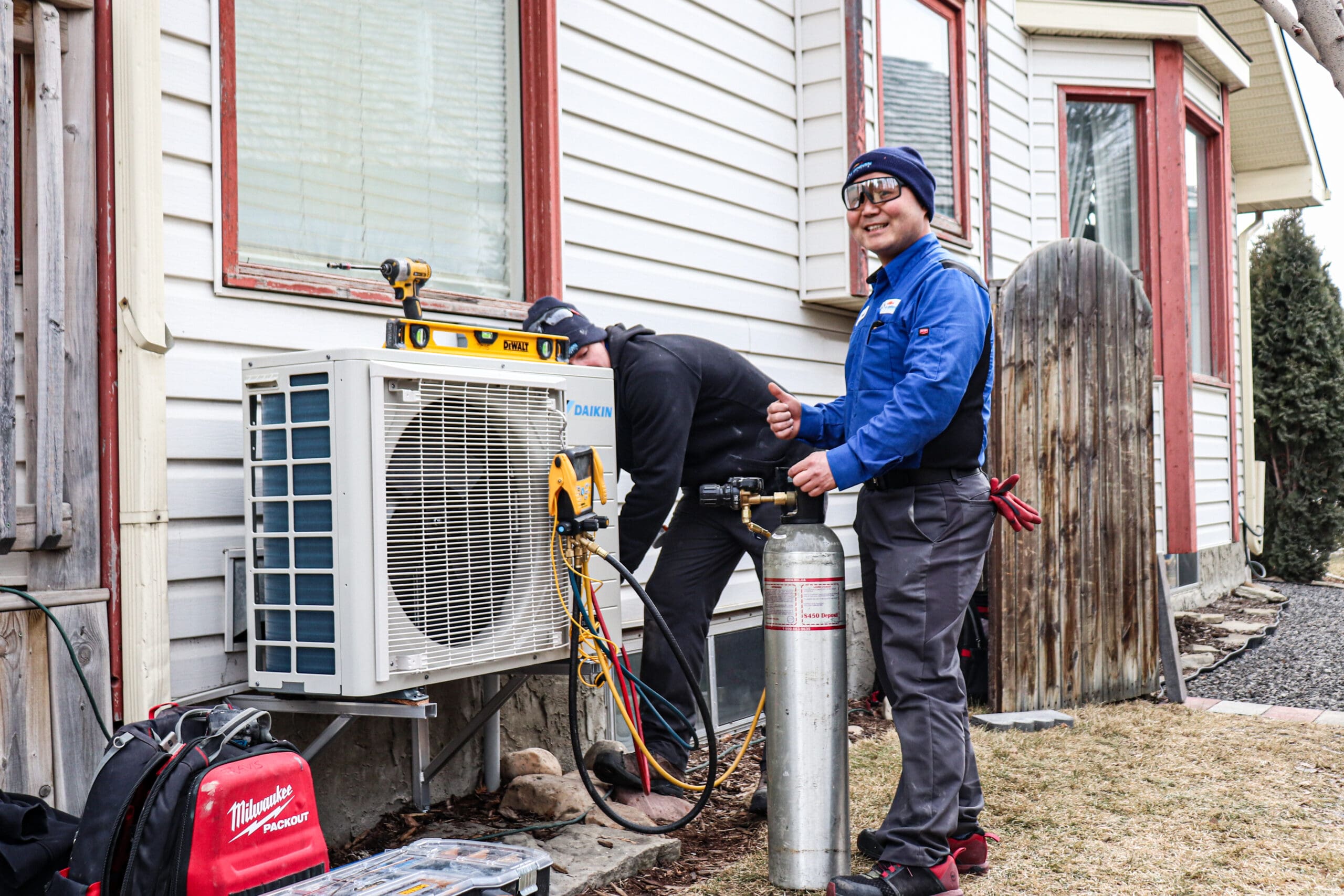When the summer heat starts bearing down on Calgary, Airdrie, Cochrane, Chestermere, and other nearby…

Understanding How High Efficiency Furnaces Work
The basic principal of a furnace is simple: heat air and move it throughout the home. However, furnaces are complex machines. As the technology that drives heating systems improves, it can become confusing for the average homeowner to understand how high efficiency furnaces work and differ from their conventional counterparts.
How Do We Measure Efficiency?
First, you have to understand how efficiency is measured. In an earlier blog, we discussed the HVAC ratings all homeowner need to know — including the Annual Fuel Utilization Efficiency (AFUE) Rating. In short, AFUE measures how efficiently gas is converted into heat and is expressed as a percentage. For example, a 90% AFUE means that 90% of the gas that comes into the furnace is converted to heat, while 10% is wasted and lost in the exhaust. Essentially, the higher the AFUE — the higher the efficiency.
How Do Conventional Furnaces Work?
When the thermostat in a room registers that the temperature has fallen below the desired setting, it sends a signal to the furnace that opens a valve and delivers natural gas to the heating systems burners.
The pilot light or electronic ignition lights the burner inside the combustion chamber — creating heat in the heat exchanger. Once the air is warmed, it is pushed into the hot-air plenum (the air space or chamber that fills with air to be distributed) and then circulated throughout the home via the duct-work.
The combustion gasses created by burning the fuel are vented through a flue or exhaust stack.
The older the furnace, the less efficient it is. Systems from the 1950’s can have an AFUE of only 56%, while mid-efficiency heating systems have an average AFUE of 80%-83%.
How Do High Efficiency Furnaces Differ?
There are two improvements that have drastically increased furnace efficiency.
Two Heat Exchangers: In high-efficiency furnaces, there is an additional heat exchanger that converts condensed gas, that would otherwise be exhausted, into useable heat. The little exhaust gas that is produced is now cool enough that it can be vented through a wall with plastic piping.
Sealed Combustion: Traditional furnaces pull warm air from inside the home for combustion, and then cold outside air leaks into the house to compensate for the loss. High-efficiency furnaces have an air-intake pipe so air required for combustion comes directly from outside — leaving your warm inside air intact. Not only does this increase energy efficiency, it’s also safer as it reduces the danger of backdrafts (pulling exhaust gasses down the chimney).
With these modifications, high-efficiency furnaces are able to achieve an average AFUE of 98% -100%.
If you are having Furnace troubles it may be time for a furnace repair or even a simple annual furnace maintenance.
Contact JPS Furnace & Air Conditioning today
to learn more about the high-efficiency furnace models we carry and to see why our customers choose us for all of their heating and cooling needs!



